The Hornless Rhinoceros - the book is here!
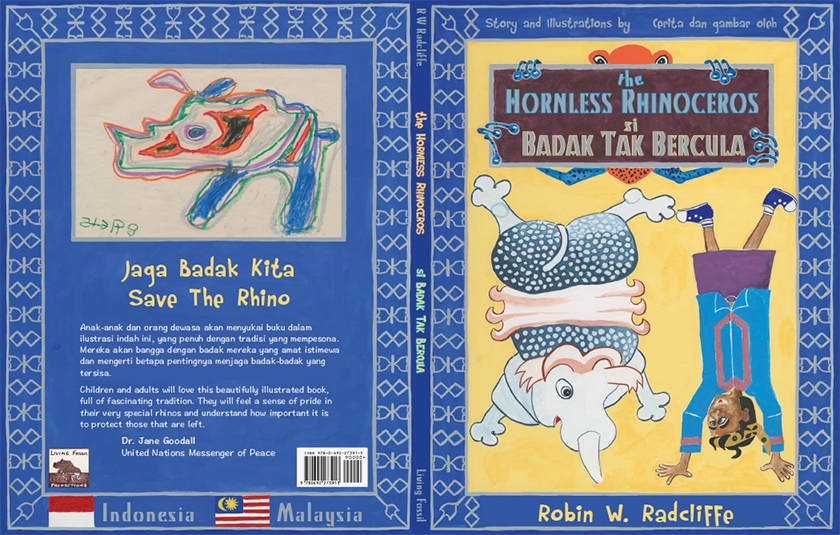
THE HORNLESS RHINOCEROS
by Robin W. Radcliffe with a forward by Dr. Jane Goodall
copyright 2015
The book was made possible by an award from the United States Fish & Wildlife Service's Rhino & Tiger Conservation Fund together with generous support from our partners (see logos here).


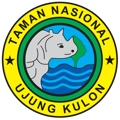
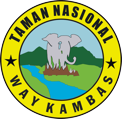


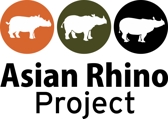
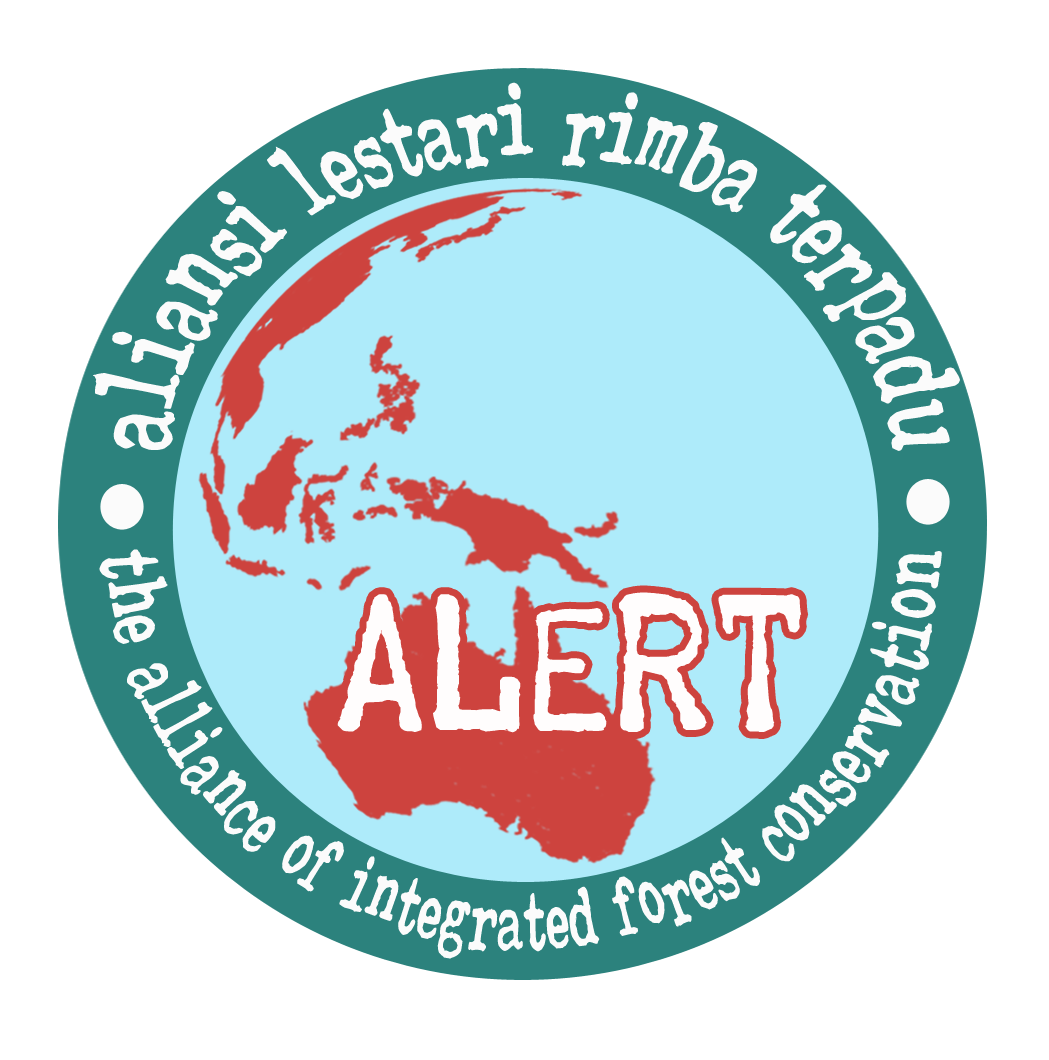
Book Details:
Hardcover with dustwrapper
Large format measuring 11x14 inches
40 pages with original illustrations by Robin W. Radcliffe
A message of hope empowering kids to save the Rhinos of the Rainforest
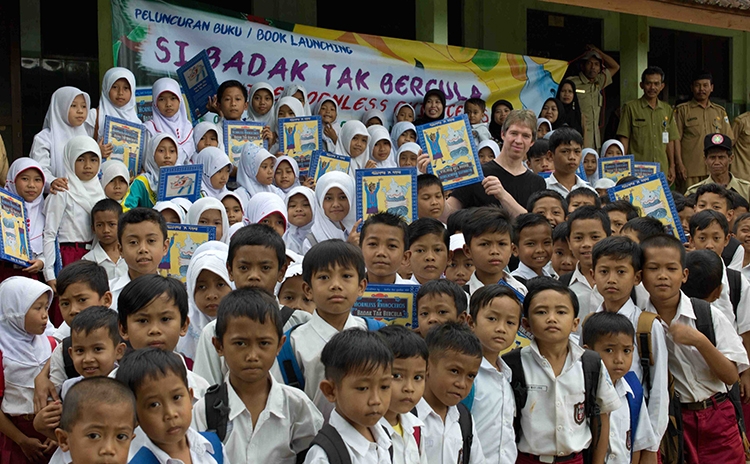
Children gather with the Living Fossil team (representing Cornell University, WWF, ALeRT and UKNP) to celebrate their own rhinoceroses and the book launch for The Hornless Rhinoceros!
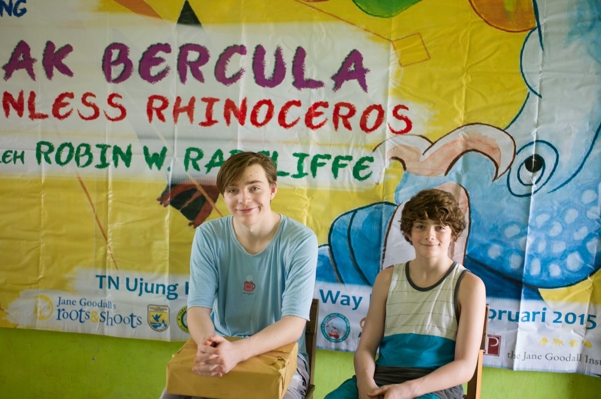
My nephews, Sterling Sauter (the artist who painted the colorful rhino on the back cover of the book) and Griffin Sauter (the actor who performed the rhino dance) joined our team in Way Kambas.
The Javan rhinoceros (Rhinoceros sondaicus) can only be found in one place on earth, Ujung Kulon National Park in west Java. Perhaps as few as 40 or 50 survive there. The government of Indonesia has endorsed a bold plan to relocate some Javan rhinos to a new location in Indonesia in an effort to secure their long term future. The success of any relocation program will rely on human attitudes toward rhinos and the rainforest.
The Sumatran rhinoceros (Dicerorhinus sumatrensis), or “hairy rhino” as it is called because of the wiry coat of hair covering its body, is listed on the IUCN’S (World Conservation Union) CITES Appendix 1 among the most endangered large mammals on earth. The population decline of this rare forest rhino, from many thousand two decades ago to less than one hundred today, is a result of poaching for the rhino’s horn for use in traditional Asian medicines and habitat fragmentation brought on by an ever-expanding human population. Sadly, all of this has happened while its homeland’s children remain unaware of the existence of their own rhinoceroses!
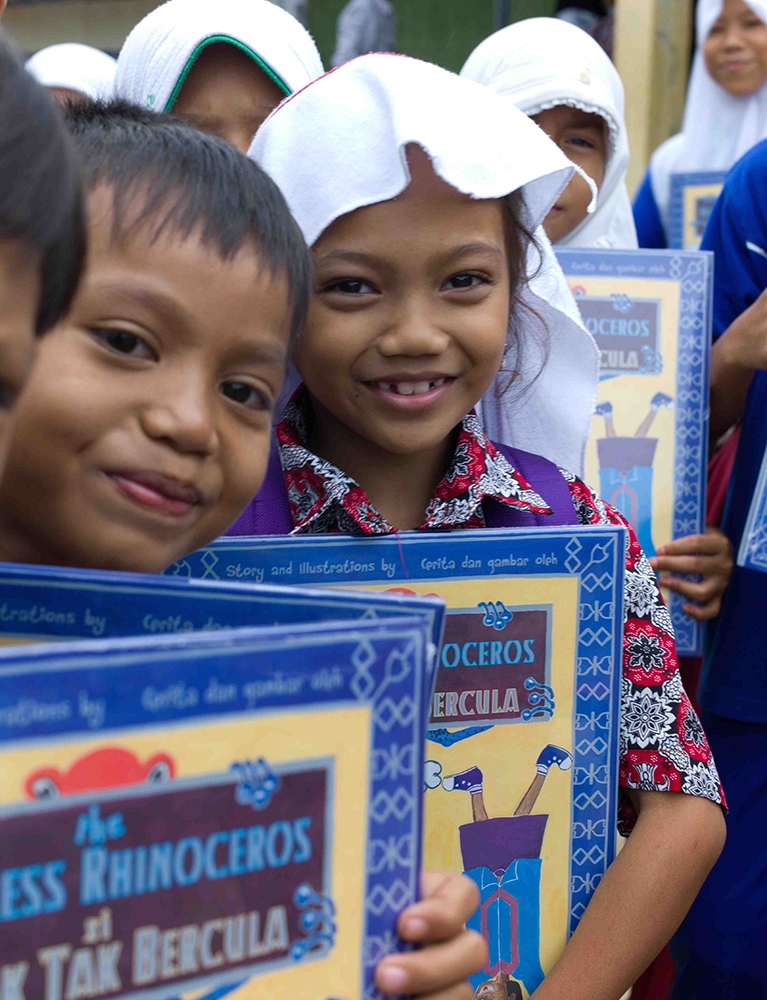
The urgency of the Indonesian rhinos' plight is compounded by significant challenges. There remains a limited understanding by local children that such a creature even lives in their country. Perhaps if the rhinoceros, or badak in the native Indonesian language, were prominently portrayed on the nation’s emblem as is the Indonesian eagle this gap in knowledge would not exist. As fate has it, the rhinoceroses of Indonesia are rare and secretive forest mammals that are rarely encountered by people, except those actively involved in its demise by poaching. For those people who do know of their own rhinoceros, the word badak – not unlike the wolf in European literature – carries with it a burden of negative connotation. Muka Badak literally translates as “Rhino Face” and is used derogatorily to describe an obstinate person of rhino-like stubbornness. Likewise, the Indonesian dictionary gives badak: he is so thick-skinned he does not know shame. While just an expression, it does impart the rhinoceros as something it most certainly is not – a mean tempered beast not worthy of saving. The children of Indonesia represent the future change in beliefs and attitudes. The Hornless Rhinoceros book program hopes to improve the future for both Javan and Sumatran rhinoceroses and for their closest friend and ally, the peoples of Southeast Asia.
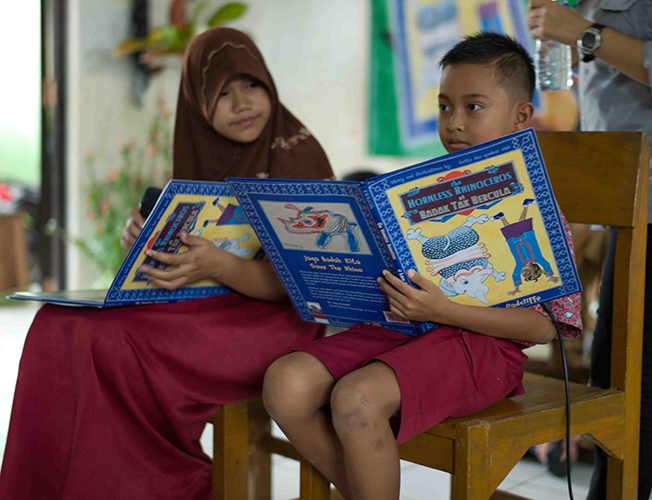
We were treated to a wonderful welcome at a Muslim school outside Way Kambas. The kids had prepared many special things for our visit, including a poem with a passionate message to save the rhino, a life size poster of a rhinoceros topped by amazing hand scroll lettering and a musical performance on a keyboard and flute.
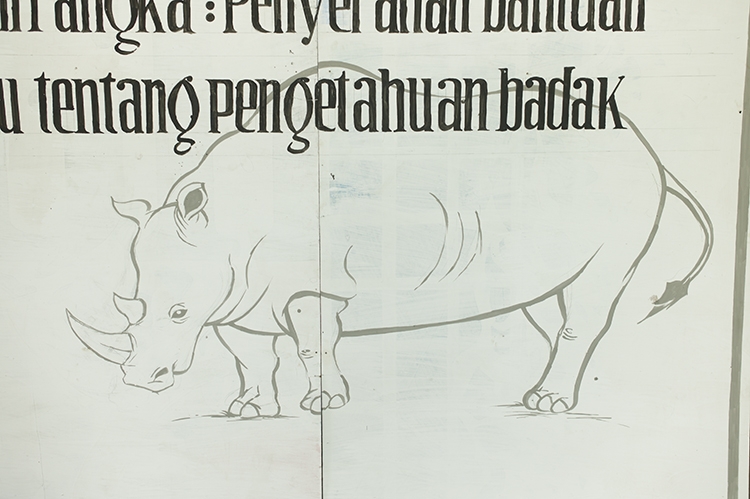
Remarkably, the picture that the children of the school had drawn for our welcome was not of an Indonesian rhinoceros at all, but rather an African white rhino. Considering the village’s close proximity to the National Park, this was astonishing; however, children do not visit the captive rhinos at the sanctuary and wild rhinos (badak) live secretive lives in the forest and are rarely encountered. In contrast, every child knows of the elephant (gajah) and the tiger (harimau) because these animals come into regular contact with villagers in this rural farming region of Sumatra, primarily through conflict with “crop-raiding” elephants or by depiction of tigers in traditional Indonesian dance ceremonies, respectively. This experience gave rise to the author’s idea for a children’s book about the Rhinoceroses of the Rainforest and its threatened home.
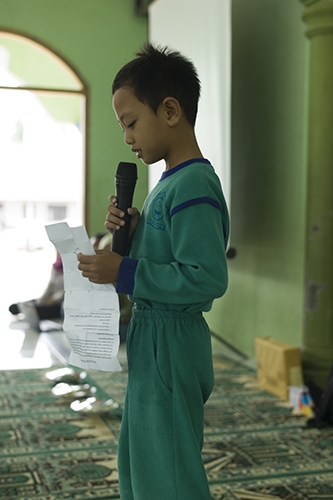
A POEM FOR THE RHINOCEROS
Badak Yang Hampir Punah
Pengarang: Ust. Ade Miftah
Pembaca: Ahmad Rifqi Wildana
Disini aku membayangkan...
Disini aku menanyakan...
Mengapa...
Manusia tega kepada hewan
Mengapa...
Manusia jahat kepada hewan
Terjawab satu kata
Badakku punah
Tapi aku ingin melestarikannya
Merawatnya hingga tidak punah lagi
Ya Allah lindungilah hewanku
Selamatkan dia
Aku ingin melihatnya bahagia
Aku ingin melihatnya gembira
Semoga manusia akan sadar
Please!! Save our horned friends
Rhino That's Almost Extinct
Author: Ust. Ade Miftah
Reader: Ahmad Rifqi Wildana
Here I imagine...
Here I wonder...
Why..
Humans have no heart for the animals
Why...
Humans do bad things to the animals
The answer is one:
My rhino is almost extinct
But I want to save them
Take care of them, so they still can survive
Dear God please protect them
Save them
I want to see them happy
I want to see them glad
Hopefully humans will realize
Please!! Save our horned friends

